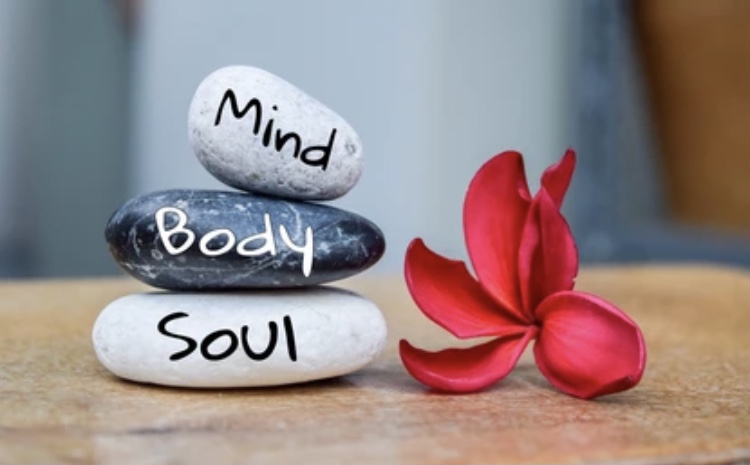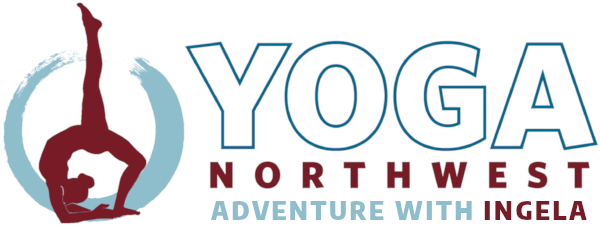 Yoga is more than just stretching your hamstrings, firming your core, and releasing tension. Yoga in its essence is to cultivate mindfulness: to open our minds and hearts fully to live, moment by moment.
Yoga is more than just stretching your hamstrings, firming your core, and releasing tension. Yoga in its essence is to cultivate mindfulness: to open our minds and hearts fully to live, moment by moment.
So, what does mindfulness mean? Well, the Oxford Dictionary says: “to be conscious and to take care.”
First, how can we become more conscious? It’s simply done by quieting the mind, which is more simply said than done!! If any of you have tried to sit down and meditate, you know how hard it is to sit in silence. Often within minutes and even seconds the mind starts hopping around with all sorts of thoughts. We call it the monkey mind. Eckart Tolle explains in his book The Power of Now: “The mind is a superb instrument if used rightly. Used wrongly, however, it becomes very destructive. To put it more accurately, it is not so much that you use your mind wrongly – you usually don’t use it at all. It uses you. This is the disease. You believe that you are the mind. This is the delusion. The instrument has taken you over.”
And what is the instrument of the mind? It’s all the knowledge we have acquired since birth, through school and life. They are concepts, labels, and images that we have learned to analyze, categorize, and judge as good and bad, right and wrong, should and have-to.
Human thoughts and mind stuff are important tools for social communication, yet all words and thoughts are man-made. Before humans walked on this earth, there was no such thing as hours, days, years; nor were there names of trees, rivers or mountains; or good and bad or right and wrong. We humans have fixed names and concepts to life around us. Yet, nothing in nature is fixed! The law of nature is that everything is constantly changing; it is in a constant state of flux. And there is more to life than we can see and perceive with our limited human eyes and senses. An eagle in the sky with her sharp eyes sees land and details below her very differently than we can see with our human eyes.
So, is the eagle’s perception real or is ours real? Jack Cornfield says in the book Offering: “The real world is beyond our thoughts and ideas. We see it through the net of our desires divided into pleasure and pain, right and wrong, inner and outer. To see the universe as it is, you must step beyond the net. It is not hard to do, for the net is full of holes.”
The purpose of Yoga is to learn to quiet the mind and experience “the holes in the net,” which are glimpses of enlightenment, allowing us to see the bigger picture of life. Unfortunately, our analytical mind creates a narrow perception with fixed ideas which create judgment, discrimination, and conflict as well as fear, loneliness, and despair.
Eckart Tolle explains the nature of our mind: “It comes between you and yourself, between you and your fellow man and woman, between you and nature, between you and God. It is this screen of thoughts that creates the illusion of separateness, the illusion that there is you and a totally separate ‘others.’ You then forget the essential fact that, underneath the level of physical appearance and separate form, you are one with all there is.”
Yoga means union. When we quiet the mind, we can move through the “holes in the net” and experience that we are all interconnected in nature, and with the source of nature, giving us a sense of comfort, trust, and peace with our world.
Mindfulness means to be conscious, but also to be “caring.” And how can we open our hearts with genuine care? When the mind is quiet, we can tune in and listen to each other’s unique history and stories. In the depth of listening we go beyond our judgmental screen and can open our hearts with understanding, care, and respect to others, whether different political, religious, or ethnic backgrounds. Swami Prajnanpad says in 365 Days of Indian Wisdom that “To love is to understand and feel that the other person is different.”
In the heart of listening we can tune in and experience that people and things around us are constantly changing. Currently I am experiencing how my teenage kids are changing daily. They are not the same today as they were yesterday. It’s a fascinating challenge to just listen, accept, respect, and tune into my inner wisdom to help adapt harmoniously to their ever changing hormones and to guide them with care, individually, towards a positive future.
So, how can we train the mind to be quiet? In Yoga we use the body to train the mind to be present. And the body doesn’t lie. It gives us instant feedback when the mind drifts off. In Iyengar Yoga we use alignment, action, and breath to effectively cultivate a presence of mind. For example, in the Warrior Pose you align the center of the knee with the center of the foot. But the moment the mind wanders away, the knee wanders away too.
And an “action” is a movement with a countermovement, which stimulates circulation and core strength, but also trains the mind to focus. For example, in the Triangle pose you press the feet actively into the floor and simultaneously extend your arm to the ceiling, while opening the chest and lifting the knee caps. But, the moment the mind wanders, the knee cap drops and the chest collapses. So, the mindful attention to alignment and action are like mantras that train the mind to be present. It’s an honest and immediate feedback.
As you learn to train the mind to focus and be present, you learn to listen deeply in each Yoga asana (posture) and explore where you are tense and tight, weak or dull. Then you use each asana to open the tight areas and strengthen the weak. As the body is constantly changing, due to hormones, body rhythms, age, and physical activities, so the tight and weak spots also might differ from day to day.
And our happy, healthy edge differs from day to day, too. Some days I can go much deeper into Hanumanasana (the splits) than others. If I practice mechanically or ambitiously I might tear a muscle. Instead, with mindful practice, I listen deeply without judgment or expectation and find my balance and happy edge with care and respect. And in 40 years of practice I have only torn one muscle. It was 38 years ago doing Upavista Konasana (seated open angle forward bend) a little too ambitiously. It took five months to heal and taught me a lesson.
Most problems in our body are due to imbalances, from overuse or under use, and from not listening to our body’s true needs. As you learn to listen and use the asanas mindfully, you can, with your inner wisdom, guide your body towards a healthy change.
What I love about teaching Yoga is when students come to class and tell how the Yoga practice has taught them to listen more mindfully to their body’s true needs. And with the awareness of alignment, action, and breath, they have improved their posture and body mechanics. They can run more gracefully without strain on their knees, bike more effectively without tension in their shoulders, garden with greater care without back pain, work at the computer with less strain in the neck, and meditate more deeply. That’s music to my ears!!
To me, my daily Yoga practice is not an end in itself, but a foundation for life, so I can run, bike, hike, ski, kayak, and work in the office with ease and grace and be a caring and respectful mama, boss, and friend, riding the waves of change harmoniously.
A little inspiration I got from a tape by Pema Chodron: Each day you wake up, say to yourself, “Today I am going to live fully as if it were my last day, and open up heartfully, joyfully, and soulfully to life. And one day when I do take my last breath, I won’t regret anything.”
Namaste!
![]()
“The pure waters of a lake reflect the beauty around it, and one can also see right through the clear water to the bottom. Similarly, a pure mind can reflect the beauty in the world around it, and when the mind is still, the beauty of the self, or soul, is seen reflected in it.” (B.K.S. Iyengar, Light on Life)
